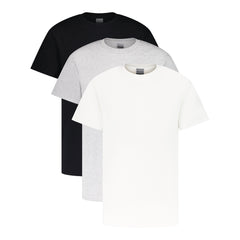
In the post-pandemic era, the word "fashion" was almost synonymous with micro-trends. A veritable style epidemic, they flooded the collective imagination for nearly five years, dictating to younger generations what to wear to stay in style. But this coolness was only a facade: most of these flash trends recycled subcultural codes and transformed them into mass-produced products—standardized, viral, and immediately imitable. The idea? Belonging to a niche... made mainstream by TikTok.
In 2024, this excitement has subsided. Between growing economic pressures and weariness with ostentatious luxury, what is now called “luxury fatigue” has forced a shift. A return to more stable, almost fundamental benchmarks. Under the influence of recession chic, a transversal trend has emerged: that of quiet luxury. A discreet, coded, timeless luxury.
But how can you embrace quiet luxury... without the luxury means? With prices that are constantly excluding, and brands well aware of this barrier, only one option remains: dress simply, without pretension. In 2025, according to Dazed, fashion will be understated, modest, almost basic.
A staple that, however, is flirting with an unexpected resurgence: that of indie sleaze. Out with the sanitized Y2K, in with a revival of the raw energy of the 2000s, in the style of Glastonbury and British rock in the rain. The fashion of tomorrow? A cross between unapologetic minimalism and casual nostalgia.

Current normcore is distancing itself from the gothic avant-garde that has dominated the last few years. Gone are the Opium aesthetics, the Chrome Hearts knights, or the dark, transgressive, fetish-tinged worlds of brands like Mowalola or JordanLuca—both fueled by Gen Z subcultures. We're witnessing a shift from obscure maximalism to a form of almost banal normality.
But beware, beneath its bland exterior, this new minimalism hides much more pointed references: we find the cold elegance of Hedi Slimane's Dior Homme or the rigor of Jil Sander from the early 2000s. A stylistic transition that videographer Mina Le rightly analyzes in her essay The Death of Personal Style. In it, she evokes the evolution of her own relationship with clothing, once marked by eccentricity, today more sober, more relaxed.
According to her, what is sometimes referred to as the "death of personal style" is simply a readjustment of priorities. In creative circles, and even more so in the fashion world, we are seeing a refocusing: instead of investing all their energy in looks, many prefer to focus on other forms of artistic expression. This is evidenced by the art directors themselves, often dressed in neutral jeans and logo-free sweaters—a sobriety that speaks volumes.
The rise of normcore and more pared-down fashion has also been accelerated by the massive appropriation of maximalist aesthetics by ultra-fast fashion. This phenomenon has emptied the codes of subcultures that are often critical of capitalism, making them too accessible and trivialized. As Dazed pointed out, where the alternative club kids of yesteryear have become commonplace, radio pop stars have adopted styles that sometimes clash with their musical world. Damiano David's radical shift from leather-briefed rock star to ambassador of Italian haute couture is a perfect example.
In this context, certain timeless icons are taking center stage again: the resurgence of Jane Birkin, the reinterpretation of Joan Didion, and Alexa Chung, the true queen of indie sleaze. In recent months, simple looks—jeans, shirts, ballet flats—have flourished on social media, which, far from being lacking in style, subtly embrace these semi-confidential references.
The term normcore is nothing new: it was coined about ten years ago and, as a March 31, 2014 definition from Urban Dictionary indicates, it describes an approach aimed at "deconstructing fashion" through a deliberately neutral and minimalist aesthetic. Much has changed since then, but paradoxically, the concept is now back in the spotlight.
This resurgence is partly explained by the concerns of a generation increasingly exposed online, immersed in a hyper-individualistic Web2, which has ended up standardizing style. But beyond the usual trend cycles, another element is at play: the implicit surveillance of social networks, already present in the early 2010s, has pushed many people to favor sober, discreet, almost anonymous outfits.
This does not necessarily reflect a collective form of paranoia, but in an unstable world, marked by the omnipresence of artificial intelligence and the resurgence of certain extreme excesses, not drawing too much attention to it is logical.
So contemporary normcore, like its earliest incarnation, might just be the simplest—and least visible—strategy for navigating a new shift in the ever-changing world of fashion.

